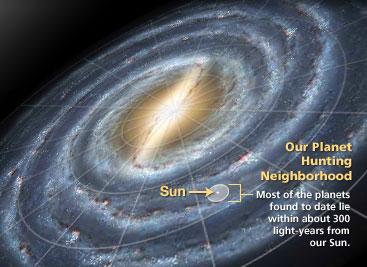MIT professor explores planets for signs of life
Scientists estimate that there may be over 100 billion planets in the Milky Way Galaxy. To date, 763 planets outside our Solar System have been identified. (Photo courtesy of NASA/Wikimedia).
Professor Sara Seager is combing the universe for signs of exoplanets — planets that orbit a star other than our sun.
She believes it’s only a matter of time before they find an exoplanet that can, and perhaps does, suppport life.
In order to track down planets with the potential to support life, Seager said she looks for bio-signatures — evidence of life — in the atmospheres of other planets.
“Life on our own Earth puts out chemical byproducts, some of which will go into the atmosphere in enough quantity to be detectable remotely. We focus in the search for exoplanets and in the search for remote signs of life on what life does. Life metabolizes, life puts out gases, some of those gases are bio-signatures,” she explained.
Seager is optimistic humans will be able to find signs of life on an exoplanet, perhaps before the end of the decade.
“In our own galaxy alone there are 100 billion stars. In our own universe we believe there are upwards of 100 billion galaxies and planets are everywhere,” Seager said. “The chance that life has evolved on another planet somewhere else has to be 100 percent. I’m sure there is life.”
Seager admits the work is challenging, and so far scientists have yet to discover another Earth-like planet.
Exoplanets are difficult to find because they are small and dim in comparison to stars. Most exoplanets have been tracked by noticing nearby stars “wobbling” slightly on their course — influenced by a planet’s own gravity. However, the exoplanets which are large enough to impact a star’s trajectory are Jupiter-like in size and gaseous, not ideal conditions for life.
“But we’re on the verge,” Seager said. “Every year more and more planets are found of smaller and smaller size or smaller and smaller mass. It’s like an archaeological dig. You go deeper and deeper. But we’re pushing the planet finding techniques to higher precision so it’s really just a matter of time before we find those Earth-size or Earth-mass planets out there.”
Seager considers herself to be part of a pioneering generation of scientists that will set the groundwork for future discoveries of life outside our Solar System.
“We’re just starting out on a very, very long journey for humanity,” Seager said. “The goal of my generation is to first find out whether or not earth-like planets exist and whether or not they are common. We will have to leave it to future generations, perhaps hundreds of years from now, who will find out whether or not life is really there.”
In order to definitively determine if there is life on another planet, scientists would have to send a space probe to take a closer look. Currently, the technology to travel to planets outside our Solar System does not exist, but Seager says the curiosity is there.
“I have a series of questions I get asked most often from people of every kind of walk of life,” Seager said. “And out of those questions, the one I get asked most often is ‘can we go there?’ I take this as a sign that our deep desire to travel in space will someday be realized.”
Despite the obstacles astrophysicists face, Seager is excited about the potential of the field.
“Let’s face it — most of earth is explored. It’s mapped,” Seager said. “We’re the new generation of explorers. We’re setting it up to find the planets around nearby stars so that if they find a way of how to do this, future generations of explorers can actually go out to the other planetary systems.”
